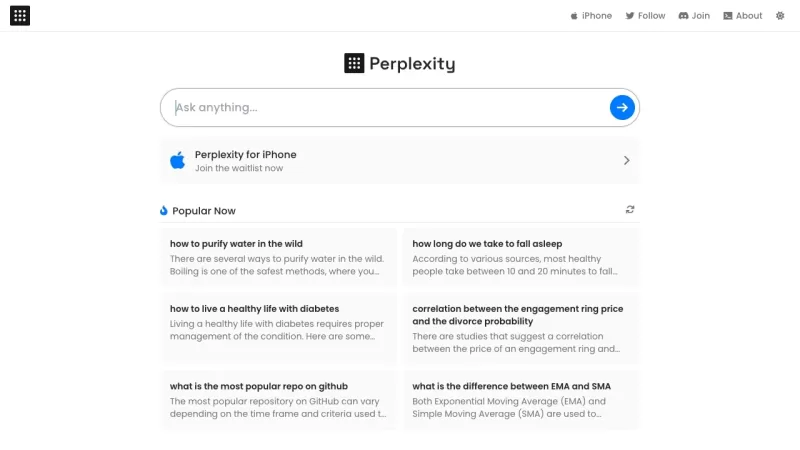Exploring the Enchantment: An In-Depth Look at Stage Performance Art

 April 29, 2025
April 29, 2025

 RaymondLopez
RaymondLopez

 0
0
Exploring the Depths of Stage Performance Art
Stage performance art isn't just about putting on a show; it's a profound medium that weaves together music, dance, drama, and visual arts to create experiences that go far beyond mere entertainment. Whether it's the spectacle of a grand theatrical production or the raw intimacy of a solo act, this art form captivates and challenges audiences, pushing the boundaries of thought and emotion. By diving into its history and key features, we uncover a vibrant world of creativity and cultural significance.
What Exactly is Stage Performance Art?
Stage performance art is a broad category of live events where artists engage directly with their audience through meticulously planned or spontaneous actions. Unlike conventional theater, it often blends elements from various artistic disciplines, including visual art, music, dance, and spoken word, to create a unique, fleeting experience.

At its heart, stage performance art communicates through action rather than just words. Artists leverage their bodies, voices, and props to tell stories or stir emotions, emphasizing the live, unpredictable nature of the performance. This form of art aims to spark thought, evoke feelings, and challenge traditional views, ranging from meticulously staged productions to impromptu street acts. The essence lies in the artist's intent to offer an experience that transcends entertainment, with meaning derived from audience interpretation and participation, making each performance a one-of-a-kind event.
A Journey Through the History of Performance Art
The origins of performance art trace back to the early 20th century, with movements like Dadaism and Futurism, which defied conventional art norms. These avant-garde pioneers broke down barriers between art and life, embracing randomness, improvisation, and audience involvement. For instance, Dadaist cabarets showcased performances that ridiculed traditional values and celebrated the absurd.
By the mid-20th century, performance art had carved out its niche, influenced by figures like Allan Kaprow, who introduced "happenings" — events that merged art with everyday life through spontaneous actions and audience interaction. The 1960s and 70s saw the emergence of body art, with artists like Marina Abramović using their bodies to delve into themes of pain, endurance, and vulnerability, pushing the boundaries of both performer and spectator.
In the late 20th and early 21st centuries, performance art has continued to evolve, embracing new technologies and tackling contemporary issues. Today, artists use digital media, interactive installations, and social platforms to engage audiences in innovative ways, constantly responding to and shaping the cultural landscape.
Key Elements That Define Stage Performance Art
Several core elements contribute to the power and impact of stage performance art, working in harmony to deliver a meaningful experience:
- The Performer: Central to the art form, the performer uses their body, voice, and presence to convey messages and emotions. Their skill, training, and artistic vision are essential to the piece's success.
- The Audience: Far from being passive observers, audiences actively shape the performance through their presence, reactions, and interpretations.
- The Space: The performance venue, be it a traditional theater, gallery, or public space, sets the mood and context. Artists thoughtfully choose and manipulate the space to enhance the performance.
- Time: As an ephemeral art, time is crucial. The performance's duration, pacing, and rhythm all play a role in its overall impact.
- Materials and Props: These can range from everyday items to elaborate costumes and sets, adding visual and symbolic layers to the narrative or emotional experience.
- Interactivity: Many pieces directly involve the audience, through spoken word, physical participation, or digital engagement, fostering a shared experience.
By skillfully blending these elements, artists create performances that are not only visually captivating but also intellectually stimulating.
The Impact of Technology on Modern Stage Performance Art
Innovative Uses of Technology in Stagecraft
Technology has transformed stage performance art, providing artists with new tools to craft immersive and engaging experiences. Digital media, interactive installations, and social media platforms are now integral to many performances.
- Projection Mapping: This technique turns surfaces into dynamic canvases, allowing artists to project images, videos, and animations onto sets, buildings, or even performers, creating stunning visual effects and altering perceptions of space.
- Interactive Installations: These invite audience participation, blurring the lines between performer and viewer. Technologies like sensors and cameras track audience movements, influencing the performance in real-time.
- Virtual Reality (VR) and Augmented Reality (AR): These technologies offer immersive experiences that transport audiences to virtual worlds or overlay digital content onto the real world, creating surreal and dreamlike performances.
- Social Media Platforms: Artists use these platforms to extend performances beyond physical spaces, engaging audiences through live streaming, online discussions, and interactive polls, fostering a sense of community.
While technology enhances performance art, it's crucial that it serves the artistic vision, not overshadows it. The best performances use technology to deepen the narrative, evoke emotions, and connect more profoundly with the audience.
Bringing Snow White to Life on Stage
The adaptation of Snow White into a musical performance exemplifies the unique essence of stage performance art. Actors don elaborate costumes, and the set transforms into a fantasy realm, with music guiding the narrative of the cherished fairy tale. At one point, Snow White engages in a playful pillow fight, adding a modern twist to the classic story.

The performance involves more than just Snow White; seven actors play the dwarves, dressed in pajamas, interacting dynamically with the set and each other. This highlights how in performance art, the ability to embody a role and deliver the script effectively is more important than physical appearance or fitness.
The Vital Role of Music and Sound
Music and sound are integral to stage performance art, heightening emotional impact and enriching the sensory experience for the audience. They set the mood, underscore the narrative, and create immersion. Performances may incorporate various musical styles, from live instruments to electronic soundscapes and pre-recorded tracks.
Some performances focus on sound itself, exploring its properties and effects on the human body. These might include experimental music, sound art installations, and interactive sonic environments, challenging traditional music boundaries and exploring new ways to engage with sound.
The blend of music and performance art opens up endless creative avenues. By skillfully manipulating sound, artists can craft performances that are both visually engaging and emotionally resonant, deepening the audience's connection to the piece.
Engaging with and Appreciating Stage Performance Art
Steps to Truly Appreciate Stage Performance Art
Appreciating stage performance art goes beyond merely watching a show; it requires an open mind, active engagement, and an understanding of the artistic and cultural context. Here are some tips to enhance your appreciation:
- Do Your Research: Before attending a performance, learn about the artist, the theme, and the historical context to gain deeper insights into the work and its meanings.
- Be Open-Minded: Performance art often defies conventional norms. Be ready to encounter unusual forms, materials, and themes, approaching the work with an openness to explore new ideas.
- Engage Actively: Don't just watch passively. Pay attention to the performer's actions, the sounds, the visuals, and the overall atmosphere, reflecting on your reactions and interpretations.
- Consider the Context: Think about the historical, social, and cultural context of the work. What issues does the artist address? How does it relate to contemporary society?
- Share Your Thoughts: Discuss the performance with others, sharing your interpretations, asking questions, and listening to different perspectives to deepen your understanding and appreciation.
By following these steps, you can transform your experience into an active engagement, enriching your understanding and appreciation of this dynamic art form.
Balancing Perspectives: The Strengths and Challenges of Stage Performance Art
Pros of Stage Performance Art
- Unfiltered Expression: It allows artists to explore ideas without constraints.
- Audience Connection: It fosters a unique, live experience that resonates emotionally.
- Boundary-Breaking: It challenges norms and inspires social change.
- Innovation Hub: It drives experimental and creative techniques.
- Cultural Reflection: It mirrors and critiques societal values and behaviors.
Cons of Stage Performance Art
- Accessibility Issues: Often limited to specific venues, reducing accessibility.
- Subjectivity Concerns: Highly subjective, leading to varied audience interpretations.
- Financial Hurdles: Artists face challenges in securing funding and resources.
- Misinterpretation Risks: Complex themes may be misunderstood or misinterpreted.
- Ephemerality Factors: Live events are transient, limiting long-term impact.
Essential Elements of Remarkable Stage Performance
Compelling Narrative and Rich Artistic Texture
Great performances strike a balance between technical skill and artistic vision, weaving a narrative that resonates while showcasing a high level of artistic and technical prowess. This might include elements of dance, drama, music, and visual arts, creating a rich, immersive experience for the audience. The aim is to transport spectators, compelling them to engage deeply with the performance both intellectually and emotionally.
Diverse Real-World Applications of Stage Performances
Various Purposes Served by the Performances
Stage performance art is not just about entertainment; it's a versatile tool with numerous applications:
- Social Commentary: It serves as a powerful platform for social commentary, challenging norms and raising awareness about contemporary issues.
- Emotional Expression: It offers a medium for artists to express complex emotions and explore personal experiences, providing a cathartic experience for both performers and audience.
- Cultural Preservation: It plays a crucial role in preserving cultural heritage, passing down stories, rituals, and values.
- Community Building: It can bring communities together, fostering a sense of shared identity and collective experience, especially through participatory performances.
- Education and Therapy: Performance art techniques are used in educational and therapeutic settings, promoting creativity, self-expression, and emotional well-being.
These varied uses highlight the power and flexibility of stage performance art as a medium for communication, expression, and social change.
Frequently Asked Questions About Stage Performance Art
Is Stage Performance Art Different from Traditional Theater?
Yes, stage performance art differs from traditional theater by emphasizing live action, improvisation, and the blending of artistic disciplines. It prioritizes conveying meaning through action and audience interaction over reliance on dialogue and scripted narratives, creating a more experiential and ephemeral connection.
What Kind of Training Do Performance Artists Need?
Performance artists benefit from training in a variety of disciplines, including acting, dance, music, visual arts, and even physical disciplines like martial arts or acrobatics. The specific training depends on the artist's vision and the nature of their performances. Beyond physical skills, they need to develop conceptual thinking, creative problem-solving, and audience connection. Many successful artists have backgrounds in multiple disciplines, enabling them to integrate different elements seamlessly. Continuous practice, workshops, and collaboration are essential for honing skills and developing a unique artistic voice.
Is Performance Art Always Shocking or Provocative?
Not necessarily. While some performance art aims to shock or provoke, many artists use it to explore subtle emotions, share personal experiences, or celebrate cultural traditions. The intent isn't always to offend or startle but to engage the audience meaningfully. Art that may be controversial can also open doors to new thoughts, ideas, or perspectives.
Related Questions on Stage Performance Art
How Can Performance Art Be Used for Social Activism?
Performance art can be a powerful tool for social activism. Artists use their bodies and actions to challenge social norms, raise awareness about injustice, and inspire change. Performances may occur in public spaces, disrupting everyday life and drawing attention to critical issues. They can incorporate elements of protest, demonstration, and civil disobedience, directly challenging power structures. Examples include performances addressing gender inequality, racial discrimination, environmental issues, and political oppression. By using their art as a form of protest, performance artists can amplify marginalized voices and mobilize communities to action. The ephemeral nature of performance art can be an asset, allowing artists to create fleeting moments of resistance that are difficult to censor or control.
What Are Some Famous Examples of Stage Performance Art?
Many iconic performances have been documented. One notable example is Marina Abramović's 'The Artist Is Present,' where she sat silently across from visitors at the Museum of Modern Art for hours, creating a powerful emotional connection. Another is Chris Burden's 'Shoot,' where he had an assistant shoot him in the arm with a rifle, questioning societal violence. These are just a couple among countless examples showcasing the diversity and impact of stage performance art.
Related article
 Embracing Change and Unlocking Inner Power with 'Let It Go'
In a world where conformity often feels like the default setting, the idea of embracing change and accepting oneself takes on a special significance. The song 'Let It Go' has struck a chord globally, serving as a powerful anthem for self-discovery and breaking free from the shackles of societal norm
Embracing Change and Unlocking Inner Power with 'Let It Go'
In a world where conformity often feels like the default setting, the idea of embracing change and accepting oneself takes on a special significance. The song 'Let It Go' has struck a chord globally, serving as a powerful anthem for self-discovery and breaking free from the shackles of societal norm
 Microsoft 365 Copilot Chat: Guide to AI Agents and Cost Savings
In today's fast-paced digital world, artificial intelligence (AI) is reshaping how businesses function. Microsoft 365 Copilot Chat has emerged as a vital component of the Microsoft 365 suite, opening up the exciting potential of integrating AI agents into your daily workflows. These AI agents promis
Microsoft 365 Copilot Chat: Guide to AI Agents and Cost Savings
In today's fast-paced digital world, artificial intelligence (AI) is reshaping how businesses function. Microsoft 365 Copilot Chat has emerged as a vital component of the Microsoft 365 suite, opening up the exciting potential of integrating AI agents into your daily workflows. These AI agents promis
 AI-Powered Guide to Creating and Selling Unique Stickers Online in 2025
In today's fast-paced digital world, the idea of creating and selling unique products online is more appealing than ever, especially for those with a creative streak or an entrepreneurial spirit. Stickers, in particular, have seen a surge in popularity, not just as a simple decorative item, but as a
Comments (0)
0/200
AI-Powered Guide to Creating and Selling Unique Stickers Online in 2025
In today's fast-paced digital world, the idea of creating and selling unique products online is more appealing than ever, especially for those with a creative streak or an entrepreneurial spirit. Stickers, in particular, have seen a surge in popularity, not just as a simple decorative item, but as a
Comments (0)
0/200

 April 29, 2025
April 29, 2025

 RaymondLopez
RaymondLopez

 0
0
Exploring the Depths of Stage Performance Art
Stage performance art isn't just about putting on a show; it's a profound medium that weaves together music, dance, drama, and visual arts to create experiences that go far beyond mere entertainment. Whether it's the spectacle of a grand theatrical production or the raw intimacy of a solo act, this art form captivates and challenges audiences, pushing the boundaries of thought and emotion. By diving into its history and key features, we uncover a vibrant world of creativity and cultural significance.
What Exactly is Stage Performance Art?
Stage performance art is a broad category of live events where artists engage directly with their audience through meticulously planned or spontaneous actions. Unlike conventional theater, it often blends elements from various artistic disciplines, including visual art, music, dance, and spoken word, to create a unique, fleeting experience.

At its heart, stage performance art communicates through action rather than just words. Artists leverage their bodies, voices, and props to tell stories or stir emotions, emphasizing the live, unpredictable nature of the performance. This form of art aims to spark thought, evoke feelings, and challenge traditional views, ranging from meticulously staged productions to impromptu street acts. The essence lies in the artist's intent to offer an experience that transcends entertainment, with meaning derived from audience interpretation and participation, making each performance a one-of-a-kind event.
A Journey Through the History of Performance Art
The origins of performance art trace back to the early 20th century, with movements like Dadaism and Futurism, which defied conventional art norms. These avant-garde pioneers broke down barriers between art and life, embracing randomness, improvisation, and audience involvement. For instance, Dadaist cabarets showcased performances that ridiculed traditional values and celebrated the absurd.
By the mid-20th century, performance art had carved out its niche, influenced by figures like Allan Kaprow, who introduced "happenings" — events that merged art with everyday life through spontaneous actions and audience interaction. The 1960s and 70s saw the emergence of body art, with artists like Marina Abramović using their bodies to delve into themes of pain, endurance, and vulnerability, pushing the boundaries of both performer and spectator.
In the late 20th and early 21st centuries, performance art has continued to evolve, embracing new technologies and tackling contemporary issues. Today, artists use digital media, interactive installations, and social platforms to engage audiences in innovative ways, constantly responding to and shaping the cultural landscape.
Key Elements That Define Stage Performance Art
Several core elements contribute to the power and impact of stage performance art, working in harmony to deliver a meaningful experience:
- The Performer: Central to the art form, the performer uses their body, voice, and presence to convey messages and emotions. Their skill, training, and artistic vision are essential to the piece's success.
- The Audience: Far from being passive observers, audiences actively shape the performance through their presence, reactions, and interpretations.
- The Space: The performance venue, be it a traditional theater, gallery, or public space, sets the mood and context. Artists thoughtfully choose and manipulate the space to enhance the performance.
- Time: As an ephemeral art, time is crucial. The performance's duration, pacing, and rhythm all play a role in its overall impact.
- Materials and Props: These can range from everyday items to elaborate costumes and sets, adding visual and symbolic layers to the narrative or emotional experience.
- Interactivity: Many pieces directly involve the audience, through spoken word, physical participation, or digital engagement, fostering a shared experience.
By skillfully blending these elements, artists create performances that are not only visually captivating but also intellectually stimulating.
The Impact of Technology on Modern Stage Performance Art
Innovative Uses of Technology in Stagecraft
Technology has transformed stage performance art, providing artists with new tools to craft immersive and engaging experiences. Digital media, interactive installations, and social media platforms are now integral to many performances.
- Projection Mapping: This technique turns surfaces into dynamic canvases, allowing artists to project images, videos, and animations onto sets, buildings, or even performers, creating stunning visual effects and altering perceptions of space.
- Interactive Installations: These invite audience participation, blurring the lines between performer and viewer. Technologies like sensors and cameras track audience movements, influencing the performance in real-time.
- Virtual Reality (VR) and Augmented Reality (AR): These technologies offer immersive experiences that transport audiences to virtual worlds or overlay digital content onto the real world, creating surreal and dreamlike performances.
- Social Media Platforms: Artists use these platforms to extend performances beyond physical spaces, engaging audiences through live streaming, online discussions, and interactive polls, fostering a sense of community.
While technology enhances performance art, it's crucial that it serves the artistic vision, not overshadows it. The best performances use technology to deepen the narrative, evoke emotions, and connect more profoundly with the audience.
Bringing Snow White to Life on Stage
The adaptation of Snow White into a musical performance exemplifies the unique essence of stage performance art. Actors don elaborate costumes, and the set transforms into a fantasy realm, with music guiding the narrative of the cherished fairy tale. At one point, Snow White engages in a playful pillow fight, adding a modern twist to the classic story.

The performance involves more than just Snow White; seven actors play the dwarves, dressed in pajamas, interacting dynamically with the set and each other. This highlights how in performance art, the ability to embody a role and deliver the script effectively is more important than physical appearance or fitness.
The Vital Role of Music and Sound
Music and sound are integral to stage performance art, heightening emotional impact and enriching the sensory experience for the audience. They set the mood, underscore the narrative, and create immersion. Performances may incorporate various musical styles, from live instruments to electronic soundscapes and pre-recorded tracks.
Some performances focus on sound itself, exploring its properties and effects on the human body. These might include experimental music, sound art installations, and interactive sonic environments, challenging traditional music boundaries and exploring new ways to engage with sound.
The blend of music and performance art opens up endless creative avenues. By skillfully manipulating sound, artists can craft performances that are both visually engaging and emotionally resonant, deepening the audience's connection to the piece.
Engaging with and Appreciating Stage Performance Art
Steps to Truly Appreciate Stage Performance Art
Appreciating stage performance art goes beyond merely watching a show; it requires an open mind, active engagement, and an understanding of the artistic and cultural context. Here are some tips to enhance your appreciation:
- Do Your Research: Before attending a performance, learn about the artist, the theme, and the historical context to gain deeper insights into the work and its meanings.
- Be Open-Minded: Performance art often defies conventional norms. Be ready to encounter unusual forms, materials, and themes, approaching the work with an openness to explore new ideas.
- Engage Actively: Don't just watch passively. Pay attention to the performer's actions, the sounds, the visuals, and the overall atmosphere, reflecting on your reactions and interpretations.
- Consider the Context: Think about the historical, social, and cultural context of the work. What issues does the artist address? How does it relate to contemporary society?
- Share Your Thoughts: Discuss the performance with others, sharing your interpretations, asking questions, and listening to different perspectives to deepen your understanding and appreciation.
By following these steps, you can transform your experience into an active engagement, enriching your understanding and appreciation of this dynamic art form.
Balancing Perspectives: The Strengths and Challenges of Stage Performance Art
Pros of Stage Performance Art
- Unfiltered Expression: It allows artists to explore ideas without constraints.
- Audience Connection: It fosters a unique, live experience that resonates emotionally.
- Boundary-Breaking: It challenges norms and inspires social change.
- Innovation Hub: It drives experimental and creative techniques.
- Cultural Reflection: It mirrors and critiques societal values and behaviors.
Cons of Stage Performance Art
- Accessibility Issues: Often limited to specific venues, reducing accessibility.
- Subjectivity Concerns: Highly subjective, leading to varied audience interpretations.
- Financial Hurdles: Artists face challenges in securing funding and resources.
- Misinterpretation Risks: Complex themes may be misunderstood or misinterpreted.
- Ephemerality Factors: Live events are transient, limiting long-term impact.
Essential Elements of Remarkable Stage Performance
Compelling Narrative and Rich Artistic Texture
Great performances strike a balance between technical skill and artistic vision, weaving a narrative that resonates while showcasing a high level of artistic and technical prowess. This might include elements of dance, drama, music, and visual arts, creating a rich, immersive experience for the audience. The aim is to transport spectators, compelling them to engage deeply with the performance both intellectually and emotionally.
Diverse Real-World Applications of Stage Performances
Various Purposes Served by the Performances
Stage performance art is not just about entertainment; it's a versatile tool with numerous applications:
- Social Commentary: It serves as a powerful platform for social commentary, challenging norms and raising awareness about contemporary issues.
- Emotional Expression: It offers a medium for artists to express complex emotions and explore personal experiences, providing a cathartic experience for both performers and audience.
- Cultural Preservation: It plays a crucial role in preserving cultural heritage, passing down stories, rituals, and values.
- Community Building: It can bring communities together, fostering a sense of shared identity and collective experience, especially through participatory performances.
- Education and Therapy: Performance art techniques are used in educational and therapeutic settings, promoting creativity, self-expression, and emotional well-being.
These varied uses highlight the power and flexibility of stage performance art as a medium for communication, expression, and social change.
Frequently Asked Questions About Stage Performance Art
Is Stage Performance Art Different from Traditional Theater?
Yes, stage performance art differs from traditional theater by emphasizing live action, improvisation, and the blending of artistic disciplines. It prioritizes conveying meaning through action and audience interaction over reliance on dialogue and scripted narratives, creating a more experiential and ephemeral connection.
What Kind of Training Do Performance Artists Need?
Performance artists benefit from training in a variety of disciplines, including acting, dance, music, visual arts, and even physical disciplines like martial arts or acrobatics. The specific training depends on the artist's vision and the nature of their performances. Beyond physical skills, they need to develop conceptual thinking, creative problem-solving, and audience connection. Many successful artists have backgrounds in multiple disciplines, enabling them to integrate different elements seamlessly. Continuous practice, workshops, and collaboration are essential for honing skills and developing a unique artistic voice.
Is Performance Art Always Shocking or Provocative?
Not necessarily. While some performance art aims to shock or provoke, many artists use it to explore subtle emotions, share personal experiences, or celebrate cultural traditions. The intent isn't always to offend or startle but to engage the audience meaningfully. Art that may be controversial can also open doors to new thoughts, ideas, or perspectives.
Related Questions on Stage Performance Art
How Can Performance Art Be Used for Social Activism?
Performance art can be a powerful tool for social activism. Artists use their bodies and actions to challenge social norms, raise awareness about injustice, and inspire change. Performances may occur in public spaces, disrupting everyday life and drawing attention to critical issues. They can incorporate elements of protest, demonstration, and civil disobedience, directly challenging power structures. Examples include performances addressing gender inequality, racial discrimination, environmental issues, and political oppression. By using their art as a form of protest, performance artists can amplify marginalized voices and mobilize communities to action. The ephemeral nature of performance art can be an asset, allowing artists to create fleeting moments of resistance that are difficult to censor or control.
What Are Some Famous Examples of Stage Performance Art?
Many iconic performances have been documented. One notable example is Marina Abramović's 'The Artist Is Present,' where she sat silently across from visitors at the Museum of Modern Art for hours, creating a powerful emotional connection. Another is Chris Burden's 'Shoot,' where he had an assistant shoot him in the arm with a rifle, questioning societal violence. These are just a couple among countless examples showcasing the diversity and impact of stage performance art.
 Embracing Change and Unlocking Inner Power with 'Let It Go'
In a world where conformity often feels like the default setting, the idea of embracing change and accepting oneself takes on a special significance. The song 'Let It Go' has struck a chord globally, serving as a powerful anthem for self-discovery and breaking free from the shackles of societal norm
Embracing Change and Unlocking Inner Power with 'Let It Go'
In a world where conformity often feels like the default setting, the idea of embracing change and accepting oneself takes on a special significance. The song 'Let It Go' has struck a chord globally, serving as a powerful anthem for self-discovery and breaking free from the shackles of societal norm
 Microsoft 365 Copilot Chat: Guide to AI Agents and Cost Savings
In today's fast-paced digital world, artificial intelligence (AI) is reshaping how businesses function. Microsoft 365 Copilot Chat has emerged as a vital component of the Microsoft 365 suite, opening up the exciting potential of integrating AI agents into your daily workflows. These AI agents promis
Microsoft 365 Copilot Chat: Guide to AI Agents and Cost Savings
In today's fast-paced digital world, artificial intelligence (AI) is reshaping how businesses function. Microsoft 365 Copilot Chat has emerged as a vital component of the Microsoft 365 suite, opening up the exciting potential of integrating AI agents into your daily workflows. These AI agents promis
 AI-Powered Guide to Creating and Selling Unique Stickers Online in 2025
In today's fast-paced digital world, the idea of creating and selling unique products online is more appealing than ever, especially for those with a creative streak or an entrepreneurial spirit. Stickers, in particular, have seen a surge in popularity, not just as a simple decorative item, but as a
AI-Powered Guide to Creating and Selling Unique Stickers Online in 2025
In today's fast-paced digital world, the idea of creating and selling unique products online is more appealing than ever, especially for those with a creative streak or an entrepreneurial spirit. Stickers, in particular, have seen a surge in popularity, not just as a simple decorative item, but as a
































